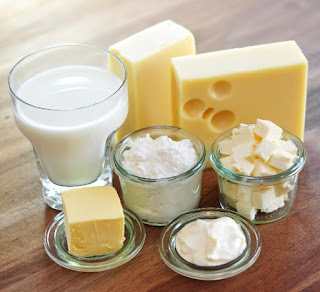DRY HEAT METHODS || COMBINATION OF COOKING METHODS || *PART - II
Today here describes about somr COOKING METHODS, like - DRY HEAT METHODS, COMBINATION METHODS.
DRY HEAT METHODS :
In Dry Heat Methods either air or fat is used as the medium of cooking.1. Roasting :
Roasting is a cooking method that uses dry heat where hot air covers the food, cooking it evenly on all sides with temperatures of at least 150°C from an open flame, oven or other heat source. Roasting can enhance the flavour through caramelization & make browning on the surface of the food.Roasting is best used for larger pieces of meat or some types of vegetables.
• In roasting many vitamins stay in the food rather than being cooked away.
Disadvantages :
• Disadvantage is that it takes a while for meat to roast thoroughly.
• Constant attention is required.
2. Grilling or Broiling :
Grilling consists of placing the food below or above or in between a red hot surface. When under the heater, the food is heated by radiation only. This results in the browning of food. Then the heat is more slowly conducted through the surfaces of the the food downwards. As heating is more superficial, grilled foods are usually reversed or rotated. Barbecues are also made by this method.
Advantages :
• Improve the colour, flavour and texture of the food.
• Reduces the moisture content of the food and improves that keeping quality.
Disadvantages :
• Constant attention is required.
• Losses of nutrients like amino acids occur when the food becomes Brown.
3. Toasting
The term toasting is used to describe a process by which bread slices are kept under the grill or between the two heated elements to brown from both sides of the bread at the same time. This can be adjusted to give the required degree of brownness through temperature control.
Advantages :
• Quick method of cooking.
• Less or no fat is required.
• Flavour is improved.
Disadvantage :
• Constant attention is required to prevent charring.
4. Baking :
Here food gets cooked by hot air. Foods baked are generally Brown and crisp on the top, soft and porous in the centre. The temperatures that are normally maintain in the oven 120°C to 260°C. The oven has to be heated slightly more than required temperature before placing the food in it.Foods prepared by baking are - cakes, pudding,custards, pizzas, tandoori chicken, tandoori meat and fish.
Advantages :
• Flavours and textures are improved.
• Variety of dishes can be made.
Disadvantage :
• special equipment and skills are required.
5. Sauteing :
Sauteing , defined - to saute is to cook food quickly in a minimal amount of fat over relatively high heat. The word comes from the French verb Sauter, which means "To Jump" , and describes not only how food reacts when placed in a hot pan but also the method of tossing the food in the pan.
Foods cooked by sauteing are generally vegetables used as side dishes in a menu.
Advantages :
• Improves the colour, flavour and texture of the food.
• Increases the calorific value.
Disadvantage :
• Constant attention is required.
6. Frying :
a. Shallow Fat Frying - here the food is cooked in fat or oil but not enough to cover it. The food prepared by this methods in the frying pan. Example - paratha, chapati, cutlets & tikkis. The finished dish will be crispy brown outside, soft and tender inside.Foods prepared by deep fat Frying are - Samoas, papads, chips, pakoda, bajji.
Advantages :
• Test is improve, along with the texture.
• Increases the calorific value.
• Fastest method of cooking.
Disadvantages :
• Sometimes the food may become oily or soggy with too much absorption of oil.
• More attention is required.
• Fried food takes long time to digest.
Combination of Cooking Methods :
• Braising
Braising is a combined method of roasting and stewing in a pen with a tight-fitting lid. The meat should be sealed by Browning on all sides and then placed on a lightly fried bed of root vegetables. Stock or gravy is added which should come to 2 or 3 meat. Flavourings and seasoning added and allowed to cook gently.Many food preparation are made not by single method but by a combination of cooking methods.
• Vermicelli Payasam : Roasting and Simmering.
• Vegetable Curry : Sauteing and Simmering.
• Upma : Roasting and Boiling.
• Meat Cutlet : Boiling and Deep Frying.
• Vegetable Pulav : Frying and Simmering.
• Mutter Paneer : Frying and Stewing.

















Comments
Post a Comment
Please do not enter any spam link in the comment box.